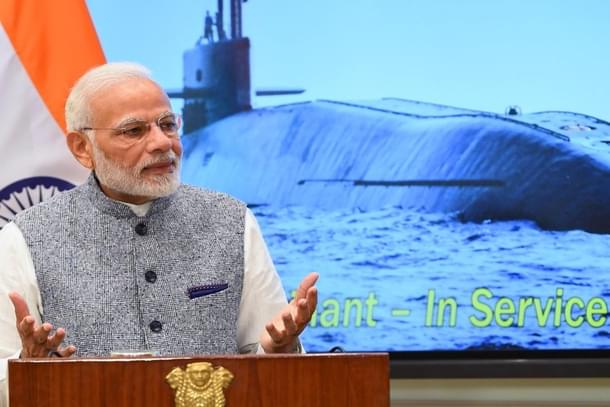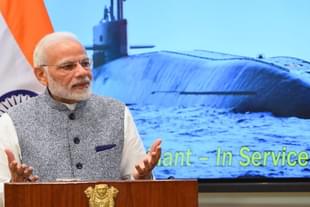Defence
India To Get Its Second Nuclear Submarine INS Arighat Today — Four Things You Should Know
Ujjwal Shrotryia
Aug 29, 2024, 05:15 PM | Updated 05:26 PM IST
Save & read from anywhere!
Bookmark stories for easy access on any device or the Swarajya app.


The Indian Navy is expected to commission its second ballistic missile nuclear submarine (SSBN) — INS Arighat — codenamed S-3 today (29 August).
Many senior Navy, Ministry of Defence (MoD), and Defence Research and Development Organisation (DRDO) officials, including Navy Chief Admiral Dinesh Tripathi, are expected to attend the quiet commissioning event in Vishakhapatnam.
Unlike nuclear-attack submarines (SSNs), which are powered by a nuclear reactor but carry conventional non-nuclear weapons, SSBNs are submarines that carry ballistic missiles armed with nuclear warheads.
Both INS Arihant and Arighat are expected to weigh close to 6,000 tonnes and are longer than 111 metres.
They are powered by an 83 MWe pressurised nuclear reactor designed, developed, and manufactured by the Bhabha Atomic Research Centre (BARC) with Russian consultancy.
Arighat is India's second SSBN after the first SSBN, INS Arihant. Here are four things that you should know about INS Arighat.
1. More Advanced than INS Arihant
INS Arihant, the first submarine of its class, was inducted in August 2016. The eight-year gap before inducting the second submarine suggests it will feature numerous upgrades and advanced equipment compared to Arihant.
Notably, INS Arihant was just a technology demonstrator (TD) and a first-generation design.
While the external design of Arighat is expected to remain similar to Arihant's, it will feature several design modifications and upgrades based on lessons learned from operating Arihant, making Arighat a step ahead.
2. Strengthening India's Deterrent Posture
While INS Arihant has completed the nuclear triad for the country, Arighat will make India's nuclear deterrent posture more robust.
Nuclear triad means the ability to launch ballistic missiles carrying live nuclear warheads from all three modes: land, air, or sea.
With Arighat, India will, at least theoretically, maintain a constant presence of a submarine patrolling its waters, ready to launch a nuclear strike at short notice, enhancing the credibility of its second-strike capability, given the country’s no-first-use (NFU) doctrine.
India's no-first-use policy, which commits to never launching a nuclear attack unless provoked, risks its land and air nuclear assets being destroyed by a surprise enemy attack
So, even if one submarine is destroyed by a surprise attack while docked at a port or sea, the second patrolling submarine can still launch a retaliatory second strike — increasing India's deterrent posture.
3. Long-Range Patrol in the Indo-Pacific
After commissioning, Arighat, armed with 12 K-15 ballistic missiles, is expected to embark on a long-range patrol in the Indo-Pacific.
Going on a long-range patrol soon after commissioning is significant, as it could be the first time an Indian SSBN armed with ballistic missiles undertakes such a mission.
While submarine patrols are highly secretive, it is believed that INS Arihant, as a technology demonstrator, mainly patrolled the Bay of Bengal under Indian naval protection.
This announcement of a long-range patrol reflects the confidence that the Indian Navy and the Ministry of Defence have in the submarine's capabilities
Moreover, this signals to India's adversaries that with this submarine, India's deterrent has matured, and engaging with India could have disastrous consequences.
4. Twelve K-15 or Four K-4 Nuclear-Capable Ballistic Missiles
Arighat can carry either twelve K-15 or four K-4 ballistic missiles, capable of carrying live nuclear warheads. From the northernmost part of the Bay of Bengal, these submarines can potentially target Beijing, the capital of China.
Additionally, the submarine has six 533mm torpedo tubes and carries anywhere from 18 to 30 torpedoes.
Staff Writer at Swarajya. Writes on Indian Military and Defence.





